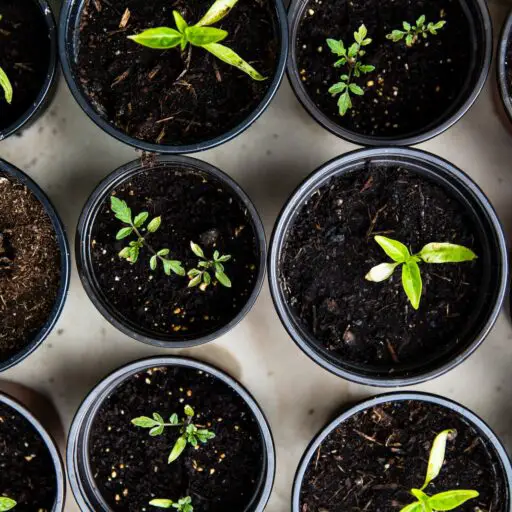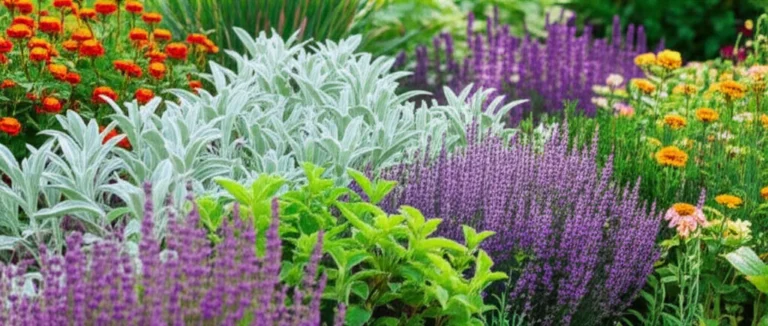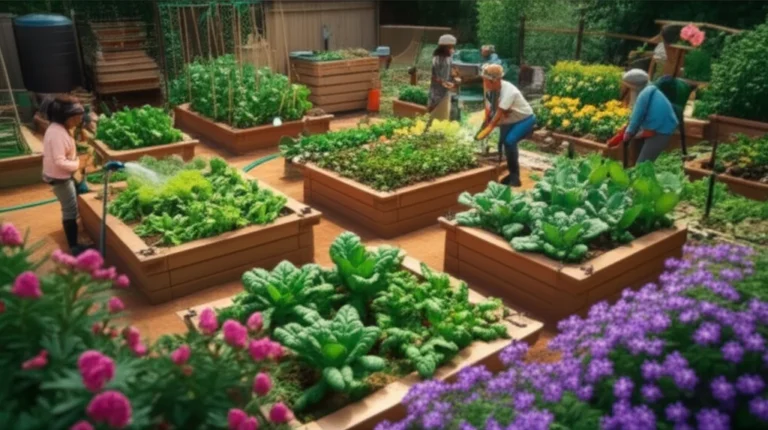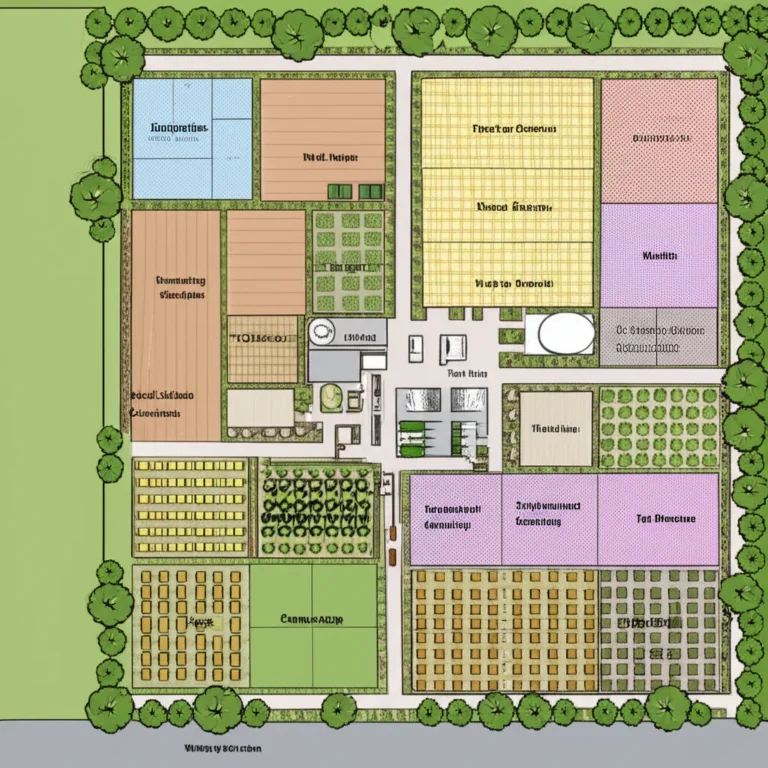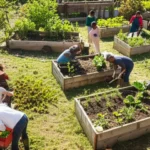Support our educational content for free when you purchase through links on our site. Learn more

Have you ever wandered through a garden and wondered, what’s the real purpose behind all this greenery? Is it just about pretty flowers and fresh veggies, or is there something deeper growing beneath the surface? At Community Gardening™, we’ve dug into the dirt—literally and figuratively—to uncover the 10 essential objectives that every garden should aim for in 2025 and beyond. From boosting mental wellbeing to supporting local wildlife, gardens are powerful spaces that do so much more than meet the eye.
But here’s the twist: knowing your garden’s objectives isn’t just for the pros. Whether you’re nurturing a tiny balcony herb patch or spearheading a sprawling community garden, setting clear goals is your secret weapon for success. Ready to discover how your garden can become a thriving ecosystem, a classroom, and a social hub all at once? Let’s dig in!
Key Takeaways
- Gardens serve multiple purposes: food production, education, community building, sustainability, and more.
- Setting clear objectives helps gardeners design, maintain, and nurture spaces that truly thrive.
- Community gardens foster social connections and promote environmental awareness in urban areas.
- Sustainability practices like composting and water conservation are crucial objectives for modern gardens.
- Gardens boost wellbeing by reducing stress and encouraging physical activity.
- For tools and supplies, consider trusted brands like Fiskars for garden tools and Envirocycle for composting solutions.
👉 Shop Gardening Essentials:
- Fiskars Garden Tools on Amazon | Corona Pruners on Amazon
- Envirocycle Composters on Amazon | Walmart
Table of Contents
- Quick Tips and Facts 🌱✨
- The Roots of Garden Objectives: A Brief History and Evolution 🌿📜
- Understanding Garden Goals: What Are the Core Objectives of a Garden? 🎯🌼
- 10 Essential Objectives Every Garden Should Aim For 🌻✅
- How Gardens Boost Wellbeing: The Therapeutic and Social Goals 🌸🧘♂️
- Sustainability in Gardening: Environmental Objectives and Eco-Friendly Practices 🌍♻️
- Designing for Beauty and Function: Aesthetic and Practical Garden Objectives 🎨🛠️
- Community Gardening Goals: Cultivating Connections and Shared Spaces 🌼🤝
- Educational Objectives: Gardens as Living Classrooms for All Ages 📚🌱
- Maximizing Yield: Objectives for Productive Vegetable and Herb Gardens 🥕🌿
- Wildlife-Friendly Gardens: Objectives to Attract and Support Local Fauna 🐝🦋
- Common Challenges and How Objectives Help Overcome Them 🚧🌾
- Conclusion: Crafting Your Garden’s Unique Purpose 🌟🌷
- Recommended Links for Garden Inspiration and Guidance 🌐🌻
- FAQ: Your Burning Questions About Garden Objectives Answered ❓🌿
- Reference Links: Trusted Sources to Dig Deeper 📖🔗
Quick Tips and Facts 🌱✨
To understand the objectives of a garden, it’s essential to link back to the core purpose of gardening, which is often about Grow Together through Community Gardening. As we explore at Community Gardening™, the goal of a community garden is multifaceted, aiming to provide a space for sustainable living, education, and community building. For more insights on what is the goal of a community garden, visit our article at https://www.community-gardening.org/what-is-the-goal-of-a-community-garden/. Here are some quick tips and facts:
- Gardens can serve as outdoor classrooms, teaching children and adults about botany, ecology, and conservation.
- They can be a source of fresh produce, promoting healthy eating habits and supporting local food systems.
- Community gardens often rely on volunteer work and donations, making them a great way to build community spirit and foster social connections.
- According to the Food and Agriculture Organization (FAO), school gardens can improve children’s health and nutrition by providing access to fresh fruits and vegetables.
The Roots of Garden Objectives: A Brief History and Evolution 🌿📜

The concept of gardens has been around for thousands of years, with evidence of ancient civilizations like the Egyptians, Greeks, and Romans cultivating plants for food, medicine, and aesthetics. Over time, the objectives of gardens have evolved to include recreation, conservation, and education. Today, gardens are not just a source of fresh produce, but also a way to promote sustainability, support biodiversity, and foster community engagement. For more information on the history of gardening, visit the Royal Horticultural Society (RHS).
Understanding Garden Goals: What Are the Core Objectives of a Garden? 🎯🌼
The core objectives of a garden can vary depending on the type of garden and its intended use. However, some common goals include:
- Food production: Growing fruits, vegetables, and herbs for consumption.
- Conservation: Protecting and preserving native plants, wildlife habitats, and ecosystems.
- Education: Teaching people about gardening techniques, plant biology, and environmental science.
- Recreation: Providing a space for relaxation, exercise, and leisure activities.
- Aesthetics: Creating a beautiful and visually appealing space.
10 Essential Objectives Every Garden Should Aim For 🌻✅
Here are 10 essential objectives that every garden should aim for:
- Sustainability: Using eco-friendly practices and renewable resources to minimize the garden’s environmental impact.
- Biodiversity: Promoting plant diversity and wildlife conservation to support healthy ecosystems.
- Community engagement: Encouraging volunteerism, education, and outreach to build a strong community.
- Food security: Growing fresh produce to support local food systems and food security.
- Water conservation: Using efficient irrigation systems and water-saving techniques to minimize water waste.
- Soil health: Maintaining healthy soil through organic amendments and sustainable practices.
- Pest management: Using integrated pest management (IPM) techniques to minimize chemical use and environmental harm.
- Waste reduction: Reducing waste and pollution through composting, recycling, and sustainable practices.
- Climate resilience: Designing gardens to be resilient to climate change and extreme weather events.
- Innovation: Encouraging innovation and experimentation to improve gardening practices and sustainability.
How Gardens Boost Wellbeing: The Therapeutic and Social Goals 🌸🧘♂️
Gardens can have a profound impact on our mental and physical wellbeing, providing a space for relaxation, exercise, and social connection. The therapeutic benefits of gardening include:
- Reduced stress: Gardening can help reduce stress and anxiety by providing a calming and meditative environment.
- Improved mood: Being in nature and surrounded by plants can improve our mood and overall wellbeing.
- Increased physical activity: Gardening can provide regular exercise, improving our physical health and fitness.
- Social connections: Community gardens can provide opportunities for social connection, friendship, and community building.
Sustainability in Gardening: Environmental Objectives and Eco-Friendly Practices 🌍♻️
Sustainability is a critical objective in gardening, aiming to minimize the garden’s environmental impact while promoting eco-friendly practices. Some sustainable gardening practices include:
- Using rainwater harvesting systems to reduce water waste and conservation.
- Implementing composting programs to reduce waste and create nutrient-rich soil.
- Using natural pest control methods to minimize chemical use and environmental harm.
- Promoting biodiversity by planting a variety of native plants and wildflowers.
Designing for Beauty and Function: Aesthetic and Practical Garden Objectives 🎨🛠️
A well-designed garden should balance aesthetics and functionality, providing a beautiful and useful space. Some design objectives include:
- Creating a visually appealing layout using color, texture, and form.
- Incorporating functional elements like paths, seating areas, and storage.
- Using sustainable materials and eco-friendly practices in garden design.
- Incorporating water features like ponds or fountains to create a peaceful atmosphere.
Community Gardening Goals: Cultivating Connections and Shared Spaces 🌼🤝
Community gardens are a great way to build connections and foster community spirit, providing a shared space for people to come together and grow. Some community gardening goals include:
- Building a sense of community through volunteer work and shared activities.
- Providing education and training on gardening techniques and sustainable practices.
- Promoting social connections and friendship among garden members.
- Supporting local food systems and food security through fresh produce.
Educational Objectives: Gardens as Living Classrooms for All Ages 📚🌱
Gardens can serve as living classrooms, providing a hands-on learning environment for people of all ages. Some educational objectives include:
- Teaching gardening techniques and plant biology.
- Promoting environmental awareness and conservation.
- Supporting STEM education through hands-on activities and experiments.
- Fostering a love of nature and appreciation for the outdoors.
Maximizing Yield: Objectives for Productive Vegetable and Herb Gardens 🥕🌿
For productive vegetable and herb gardens, some objectives include:
- Maximizing yield through efficient irrigation systems and soil management.
- Using crop rotation and companion planting to promote healthy soil and reduce pests.
- **Incorporating vertical gardening and container gardening to increase space efficiency.
- **Using integrated pest management (IPM) techniques to minimize chemical use and environmental harm.
Wildlife-Friendly Gardens: Objectives to Attract and Support Local Fauna 🐝🦋
Wildlife-friendly gardens aim to attract and support local fauna, providing a habitat for pollinators, birds, and other wildlife. Some objectives include:
- Planting native plants and wildflowers to provide food and shelter for local wildlife.
- Incorporating water features like ponds or birdbaths to provide drinking water and habitat.
- Using natural pest control methods to minimize chemical use and environmental harm.
- Creating a diverse and complex habitat to support a wide range of wildlife.
Common Challenges and How Objectives Help Overcome Them 🚧🌾
Common challenges in gardening include pests, diseases, and environmental factors like drought or flooding. By setting clear objectives, gardeners can overcome these challenges by:
- Developing a plan to mitigate risks and address challenges.
- Implementing sustainable practices to reduce environmental impact and promote resilience.
- Building a community of gardeners to share knowledge, resources, and support.
- Continuously monitoring and evaluating the garden’s progress and impact.
Conclusion: Crafting Your Garden’s Unique Purpose 🌟🌷

Wow, what a journey through the verdant world of garden objectives! From the humble seedling of history to the flourishing branches of community engagement, sustainability, and education, gardens truly are more than just pretty patches of earth. They are living, breathing ecosystems that nourish our bodies, minds, and communities.
At Community Gardening™, we’ve seen firsthand how setting clear, realistic, and inspiring objectives transforms a patch of soil into a vibrant hub of life and learning. Whether your goal is to grow fresh veggies, create a wildlife haven, or build a tight-knit community, remember: your garden’s objectives are the compass that guides every seed you plant and every hand that tends it.
If you’re feeling inspired but a bit overwhelmed, don’t worry — start small, stay flexible, and let your garden grow with you. And if you’re dreaming of a community garden, remember that it’s not just about plants; it’s about people coming together to grow something bigger than themselves.
So, ready to roll up your sleeves and dig in? Your garden’s unique purpose awaits — and we’re here cheering you on every step of the way! 🌿💪
Recommended Links for Garden Inspiration and Guidance 🌐🌻
Looking to equip your garden with the best tools and resources? Here are some top picks to get you started:
- Gardening Tools & Supplies:
- Composting Bins & Supplies:
- Books for Gardeners:
- The Vegetable Gardener’s Bible by Edward C. Smith — Amazon Link
- Braiding Sweetgrass by Robin Wall Kimmerer — Amazon Link
- The Community Gardening Handbook by Ben Raskin — Amazon Link
FAQ: Your Burning Questions About Garden Objectives Answered ❓🌿
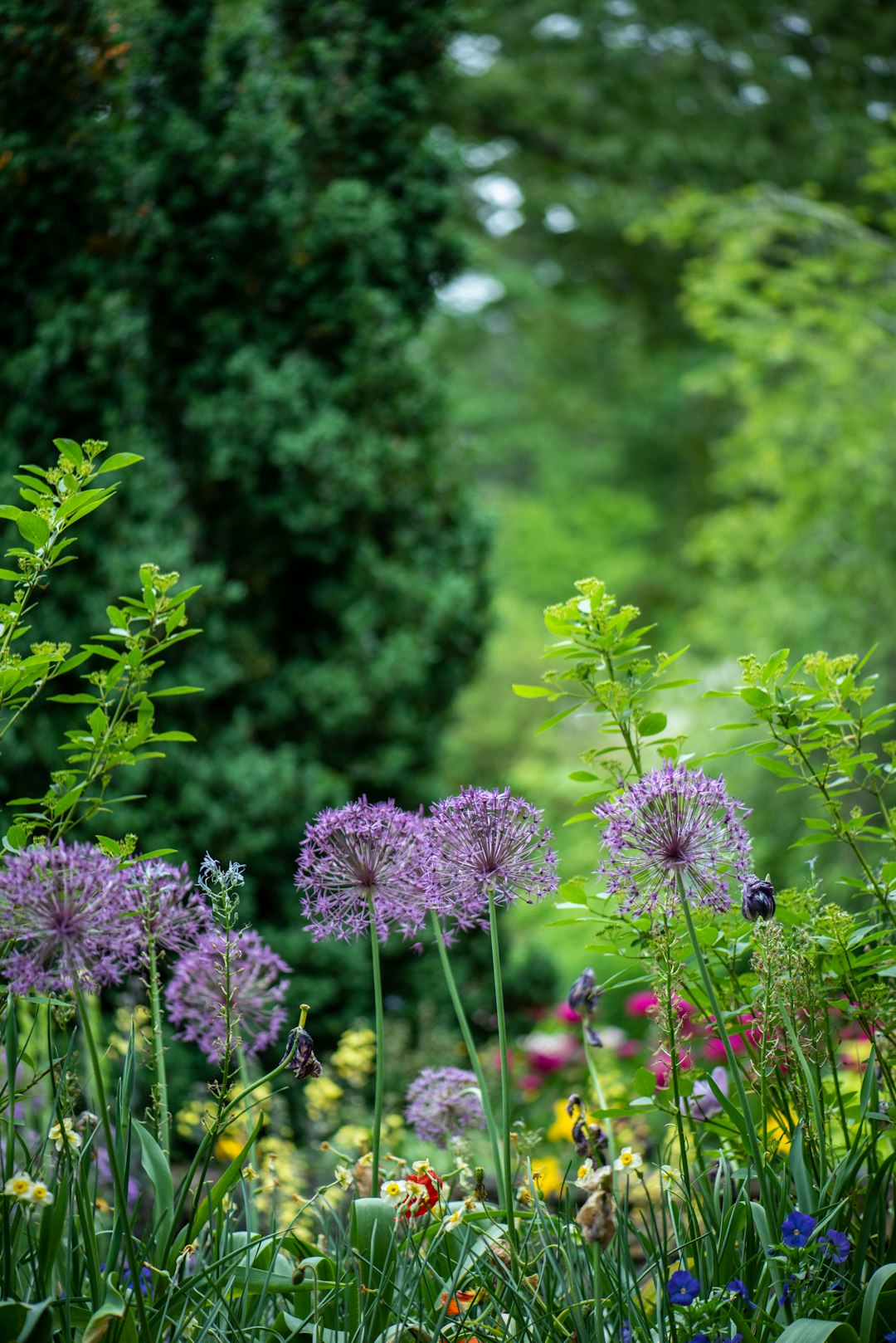
What are the benefits of community gardening for local neighborhoods?
Community gardens do more than just grow plants — they cultivate community spirit! They provide fresh produce, improve urban green spaces, and foster social connections among neighbors. Studies show that community gardens can reduce crime rates, increase property values, and promote mental wellbeing by offering a peaceful refuge from city life. Plus, they serve as educational hubs where people learn sustainable gardening and nutrition skills.
Read more about “Discover 10 Surprising Community Garden Benefits 🌱”
How can I get involved in a community garden near me and meet fellow gardeners?
Getting involved is easier than you think! Start by searching for local community gardens via municipal websites, gardening clubs, or platforms like American Community Gardening Association. Many gardens welcome volunteers and offer plots for newcomers. Attend garden events or workshops — these are perfect for meeting fellow green thumbs and sharing tips. Remember, gardening is as much about growing friendships as it is about growing plants!
What are some tips for starting a successful community garden from scratch with a group of people?
Starting a community garden is a rewarding challenge. Here’s how to set yourself up for success:
- Define clear objectives together — what do you want to grow, who will participate, and what’s the garden’s purpose?
- Choose a suitable site with good sunlight, water access, and soil quality.
- Engage the community early — hold meetings, gather input, and build enthusiasm.
- Plan for maintenance — assign roles, create schedules, and prepare for seasonal care.
- Secure resources — tools, seeds, compost, and funding through grants or donations.
- Keep communication open and celebrate milestones to maintain momentum.
For more detailed guidance, check out our Community Garden Policies and Community Garden Events pages.
Read more about “What Are the Hidden Disadvantages of Community Growth? 10 Surprising Insights … 🌱”
What role can community gardens play in promoting sustainability and environmental awareness in urban areas?
Community gardens are green lungs in urban jungles, promoting sustainability by:
- Reducing food miles and supporting local food systems.
- Encouraging organic gardening and reducing reliance on harmful pesticides.
- Providing habitats for pollinators and other wildlife.
- Teaching urban residents about water conservation, composting, and biodiversity.
- Acting as demonstration sites for sustainable practices that can ripple out into the wider community.
By engaging people hands-on, community gardens foster a deeper connection to the environment and inspire eco-friendly lifestyles.
How do garden objectives influence the design and maintenance of a garden?
Great question! Your garden’s objectives act like a blueprint for design and upkeep. For example, if your goal is food production, you’ll prioritize raised beds, irrigation, and crop rotation. If wildlife support is key, you’ll include native plants and water features. Maintenance schedules, volunteer roles, and resource allocation all hinge on these goals. Clear objectives keep everyone aligned and the garden thriving.
Read more about “Discover 7 Types of Community Gardens 🌱”
Reference Links: Trusted Sources to Dig Deeper 📖🔗
- FAO’s comprehensive guide on Objectives of School Gardens — a foundational resource on balancing practical and educational aims.
- American Community Gardening Association: Community Gardens Overview
- KidsGardening’s essential resource on Determining Garden Program Goals — perfect for educators and organizers.
- Royal Horticultural Society’s Gardening Advice
- Corona Tools official site: https://coronatools.com/
- Fiskars Garden Tools on Amazon: https://www.amazon.com/s?k=Fiskars+garden+tool+set&tag=bestbrands0a9-20
Ready to turn your garden dreams into reality? Remember, every great garden starts with a clear purpose — and a little bit of dirt under your nails! 🌿🌞
